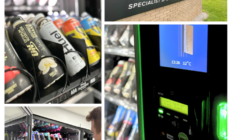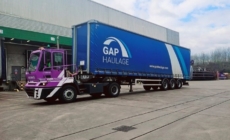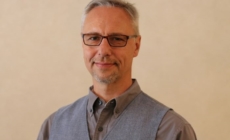-
Nutrivend selects Forterro’s Orderwise to support online expansion and streamline operations - April 11, 2025
-
ARROWXL LAUNCHES AMBITIOUS ZERO WASTE ROADMAP - April 8, 2025
-
THE BCMPA’S NEW CAMPAIGN DRIVES OUTSOURCING SUCCESS IN Q1 - April 7, 2025
-
BLACKOUT TECHNOLOGIES TARGETS TELEMATICS-INTEGRATED MOBILE DEVICE BLOCKING TO COMBAT SMARTPHONE DISTRACTION - April 1, 2025
-
OpenADR Alliance announces first OpenADR 3.0 certified products with EVoke Systems, E.ON Energy and Universal Devices - March 25, 2025
-
Growing fulfilment and contract packer appoints new Managing Director - March 25, 2025
-
When is it time to invest in a WMS? Understanding the key trigger points - March 25, 2025
-
eCapital helps Vantage Recruitment on its journey to financial success - March 24, 2025
-
Hugo Beck Celebrates 70 Years of Packaging Innovation with Open House Events - March 20, 2025
-
PROLOG FULFILMENT SUPPORTS LUNA DAILY’S COMMITMENT TO BETTER BODY CARE FOR ALL WOMEN - March 19, 2025
Far too many of the warehouses and cold stores that process fresh produce for the UK’s grocery retail sector remain over-reliant on old fashioned manual handling processes because the alternative has always been limited to systems based on conveyor technology that require a vast amount of building space to operate in. But, with the emergence of autonomous mobile robots, grocery retailers are starting to benefit from rethinking their fresh produce storage and intralogistics processes, says Alfred Chen
Total grocery retail sales in the UK are forecast to hit £241.3 billion by 2028. This is up from 2023’s figure of £217.2 billion. And, as the leading players in this hyper-competitive sector gear up their stores and supply chains to keep pace with the projected growth, the industry faces some complex challenges.
Inflation and labour issues stubbornly refuse to go away, while changes in consumer behaviour including growing demand for healthy and sustainably-sourced fresh products at the lowest prices, and a preference for buying fewer items but visiting stores more frequently, mean that product availability and price are more vital than ever to a grocery retailer’s success.
And as they look for advances in technology along with new ways of working that will give them a competitive edge and boost revenue by trimming running costs, grocers are opting to automate key aspects of their supply chains.
The introduction of greater levels of automation and robotics within fresh grocery products warehouses and distribution centres is, arguably, long overdue: a surprisingly high number of the processes that are fundamental to the smooth running of every fresh produce warehouse or distribution centre are performed manually.
This over-reliance on human labour is difficult to understand or justify when automated handling technology and autonomous robot-based solutions are available that undertake the same jobs as human workers at twice the speed, more accurately, safely, cost effectively and, particularly importantly, in ways that make the most efficient use of the warehouse space available.
Most – if not all – fresh goods distribution centres have traditionally operated a ‘pick-to-zero’ order picking regime for fresh produce such as fruit and vegetables, milk and other dairy products.
‘Pick to zero’ involves operatives manually sorting incoming pallet loads onto a ‘target’ pallet or a roll cage which is then loaded onto a delivery vehicle and shipped to a retail store.
The name ‘pick-to-zero’ is derived from the fact that all fresh goods arriving at the DC must leave the facility the same day – nothing is stored overnight.
‘Pick to zero’ processes rely on a large workforce and a considerable amount of manual handling. But by rethinking the process and introducing robots to reduce the level of human intervention required for sorting, picking and order building it is possible to cut the amount of manual handling required and, consequently, shrink the number of workers who must be dedicated to the task.
For example, at a typical UK Regional Distribution Centre where, for instance, 50,000 orders are picked each day, by introducing robotic technology it is possible to reassign as many as 50 workers to other more profitable duties within the business.
Modern robotic sortation systems require significantly less space within which to operate than old-style solutions that had cross belt conveyors at their heart.
A cross belt sorter will often need as much as 300 per cent more warehouse space within which to operate than the people-intensive system it is designed to replace.
So, the benefits of being able to reduce the number of workers dedicated to the picking and order collation process have always had to be weighed against the cost of the extra warehouse space that will be needed to accommodate cross belt sortation conveyor technology.
However, with mobile robot technology a fully-optimised automated picking and sortation system that delivers greatly improved labour efficiency and a raft of other benefits within a storage building’s existing footprint is now possible.
An order building system based on circa 100 autonomous mobile robots requires just 1,000 square metres of warehouse space to work within and will move some 3000 units per hour. That is over 60,000 a day, which is certainly sufficient to meet or, in most cases, exceed the typical daily throughput of a regional distribution centre serving the grocery sector.
And robotic lift solutions are available that make optimum use of the vertical space available too.
Within ambient stores the cost of the extra space required to accommodate a cross belt sorter is significant but in a chilled store where the additional area must be kept refrigerated, at a time when energy prices are among the biggest overheads for many businesses, cross belt technology is particularly hard to justify.
The grocery industry is going through a period of structural change but by adopting agile mobile robot based intralogistics solutions grocery retailers will be well placed to not only embrace the changes but view them as an opportunity.
Alfred Chen is founder and CEO of Rainbow Dynamics a new UK-based robotics and automation company focused on the design and build of sustainable robotic handing and sortation solutions for logistics warehouses, parcel handling facilities, manufacturing sites and e-commerce fulfilment centres.

































